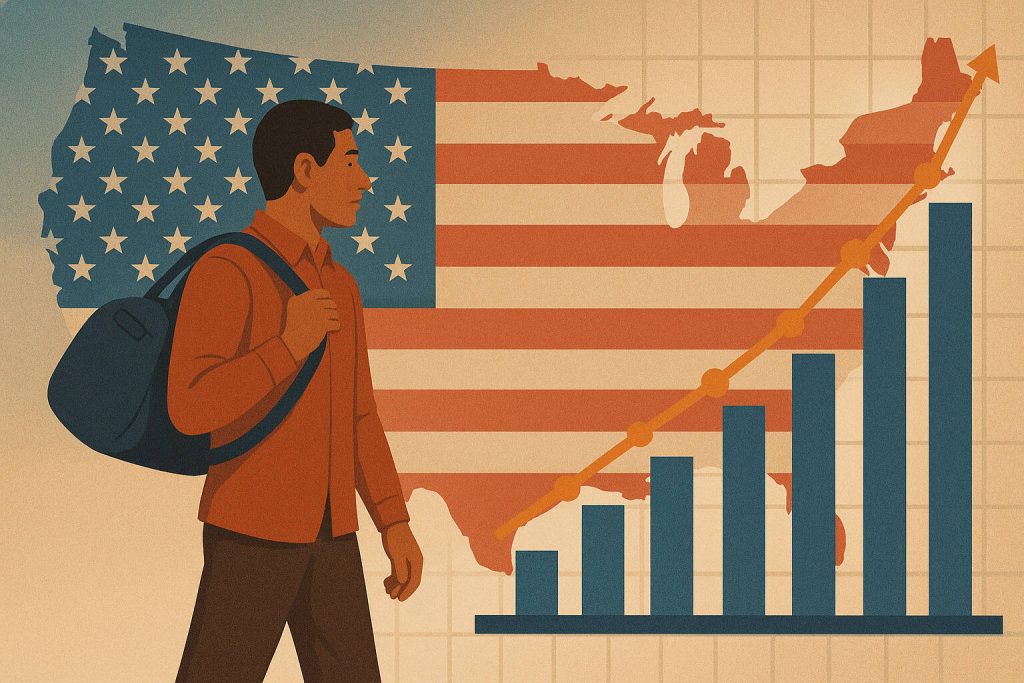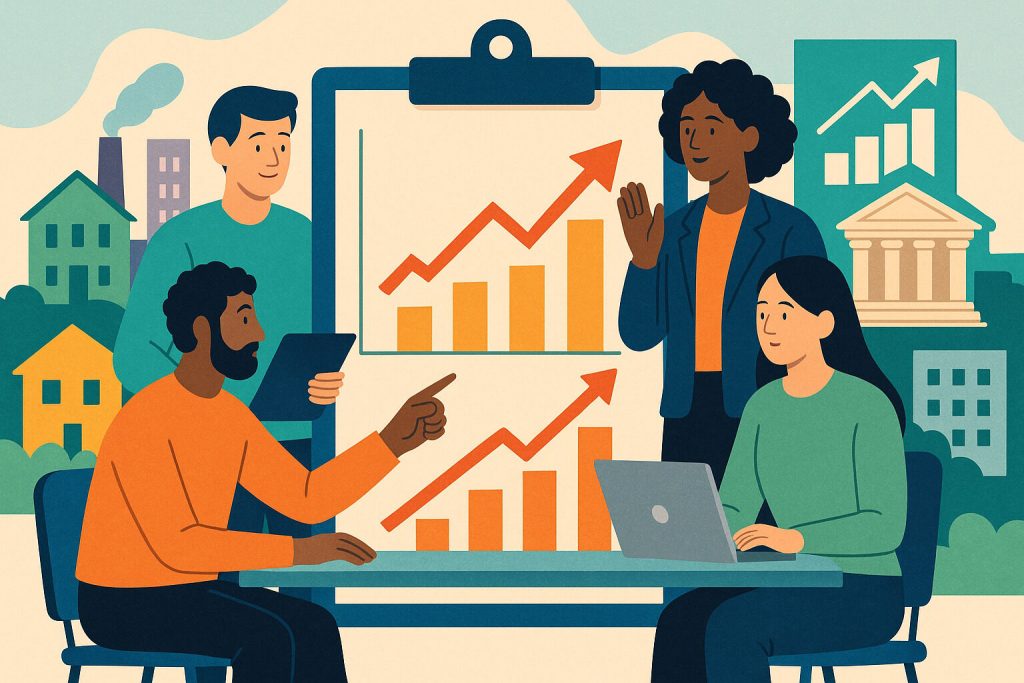
Understanding Demographic Shifts and Their Economic Impact
Demographic shifts play a crucial role in shaping economies and social policies worldwide. These shifts encompass changes in birth rates, aging populations, migration patterns, and workforce dynamics. Over time, these trends alter the structure of societies, influencing the demand for public services, employment rates, and overall economic stability.
As populations age, healthcare systems experience increased pressure due to rising medical costs and long-term care requirements. Meanwhile, declining birth rates lead to shrinking workforces, reducing tax revenues and straining pension programs. Migration, while often a solution to labor shortages, presents challenges in integration, social services, and housing demands.
Governments and policymakers must respond to these demographic changes with forward-thinking policies to ensure economic resilience. Exploring the role of ballot initiatives can provide valuable insight into how citizens directly influence policy decisions in response to these shifts. Balancing financial resources between the working and non-working population is a growing concern for many countries. Without effective policies, economic stagnation and increased inequality may arise, impacting the long-term sustainability of social welfare systems.
The Aging Population and Its Impact on Economic Policy
The aging population is one of the most significant demographic challenges for modern economies. As life expectancy increases and birth rates decline, a greater percentage of the population moves into retirement, reducing the number of active workers contributing to national economies.
One of the most pressing concerns is the sustainability of pension systems. Many social security programs are designed on the assumption of a larger working population supporting retirees. However, with fewer young people entering the workforce, governments are forced to adjust policies, such as increasing the retirement age, adjusting pension payouts, or raising taxes to sustain these programs.
Healthcare costs also rise with an aging population. Governments must allocate more resources toward long-term care, geriatric services, and chronic disease management. Countries like Japan, which has one of the highest aging populations in the world, have adapted by investing in automation and robotics to support elderly care.
To counterbalance the economic impact, many governments encourage older individuals to remain in the workforce longer, offering incentives for delayed retirement. Additionally, investments in healthcare innovation, preventive care, and age-friendly infrastructure help ease the financial burden of an aging population.
How Declining Birth Rates Affect Labor Markets and Economic Growth
Many advanced economies, particularly in Europe and East Asia, are experiencing declining birth rates, which presents significant challenges to labor markets. With fewer young people entering the workforce, economic growth slows, and productivity declines.
A shrinking workforce means fewer taxpayers contributing to public services, leading to potential financial deficits in healthcare, education, and pension systems. In response, some governments offer financial incentives, such as child subsidies, extended parental leave, and affordable childcare services, to encourage higher birth rates.
However, these policies often take decades to yield results. Countries like South Korea and Japan have implemented extensive pro-natalist policies, yet birth rates remain low. The high cost of living, career pressures, and shifting social norms contribute to declining family sizes.
To compensate, many nations turn to immigration as a solution to declining workforces. By attracting skilled workers from abroad, countries can sustain economic growth and fill labor shortages. However, migration policies must be carefully managed to ensure smooth integration into the workforce and society.
Migration and Its Role in Economic and Social Policy
Migration plays a critical role in shaping economic policies, particularly in regions facing workforce shortages. As birth rates decline and populations age, migrant workers help fill essential roles in healthcare, technology, construction, and manufacturing.
Immigration boosts economic growth by increasing labor supply, expanding consumer markets, and enhancing innovation. Many developed nations, including the United States, Canada, and Germany, rely on migrant workers to support industries that struggle with domestic labor shortages.
However, migration also presents challenges. Governments must develop policies that ensure fair wages, equal employment opportunities, and proper integration programs. Overcrowding in cities, housing shortages, and strains on public services can create social tensions if immigration policies are poorly managed.
Successful immigration policies balance economic benefits with social stability. Countries that effectively integrate migrants into their economies, such as Canada, benefit from sustained growth and cultural diversity.
Social Welfare Systems Under Pressure: Adapting to Demographic Changes
Social welfare programs, including pensions, unemployment benefits, and healthcare services, face increasing pressure as demographic trends shift. With aging populations and declining workforces, maintaining sustainable welfare systems becomes a complex challenge.
Governments must find ways to finance social welfare programs without overburdening taxpayers. Some solutions include transitioning to privatized pension schemes, increasing payroll taxes, or reducing certain benefits to balance financial sustainability.
Universal Basic Income (UBI) is a policy approach being explored in some nations as a potential solution. UBI provides citizens with a guaranteed income, helping to offset income inequality and job displacement due to automation.
As demographic shifts continue, governments must reimagine social safety nets to ensure that resources are distributed equitably, particularly for vulnerable populations.
Workforce Trends and the Future of Employment Policies
Changing demographics significantly impact employment policies. The rise of the gig economy, remote work, and automation has transformed traditional labor markets, requiring policymakers to adapt to new workforce demands.
Younger generations prioritize flexible work arrangements, digital entrepreneurship, and skill-based career paths. Governments must invest in education and workforce training programs to equip workers with the skills needed for evolving industries.
Gig workers, freelancers, and self-employed individuals require updated labor protections, such as access to healthcare, retirement benefits, and job security. Policymakers must strike a balance between fostering innovation and ensuring fair labor standards.
The future of employment policies will depend on how governments manage demographic shifts while ensuring that workers are protected in an increasingly digital and automated world.
The Role of Technology and Automation in Addressing Demographic Challenges
Automation and artificial intelligence (AI) are playing an increasing role in addressing labor shortages caused by demographic shifts. With fewer young workers entering the labor market, industries are turning to robotics and machine learning to maintain productivity.
Sectors such as healthcare, manufacturing, and logistics are seeing rapid advancements in automation. AI-driven healthcare solutions, for example, assist in diagnostics, robotic surgeries, and elderly care, helping to alleviate pressure on healthcare systems.
While automation increases efficiency, it also raises concerns about job displacement. Governments must ensure that workers affected by automation have access to retraining programs and alternative employment opportunities.
Investments in technology-driven solutions must be balanced with policies that protect workers and ensure economic stability in an automated future.
Economic Inequality and Demographic Disparities in Policy-Making
Demographic shifts often exacerbate economic inequalities, particularly among marginalized communities. Wealth distribution, healthcare access, and education opportunities vary widely depending on social and economic backgrounds.
Governments must design inclusive policies to ensure that economic growth benefits all demographics. Investments in public education, affordable healthcare, and housing initiatives help create more equitable societies.
Programs that support women in the workforce, close wage gaps, and provide accessible childcare contribute to economic inclusivity. Policymakers must recognize that demographic changes impact different groups disproportionately and create targeted policies to address these disparities.
Case Studies: Countries Adapting to Demographic Shifts
Several countries provide valuable examples of how economic and social policies can be adapted to demographic changes.
- Japan has implemented pension reforms, promoted robotics in the workforce, and adjusted immigration policies to address labor shortages.
- Germany has focused on skill-based immigration programs to maintain a strong workforce despite low birth rates.
- Sweden has successfully maintained workforce stability through progressive parental leave policies, subsidized childcare, and gender-equal work policies.
By analyzing these case studies, policymakers can identify best practices for managing demographic transitions effectively.
The Future of Economic Policy and Social Welfare in a Changing Demographic Landscape
Demographic trends will continue to shape economic policies and social welfare systems in the coming decades. Governments must remain adaptable, integrating technology, international cooperation, and sustainable financial planning to ensure long-term economic resilience.
Policymakers must balance economic growth with social stability, ensuring that welfare systems remain effective while addressing demographic challenges. By taking a proactive approach, societies can turn demographic shifts into opportunities for innovation and progress.


